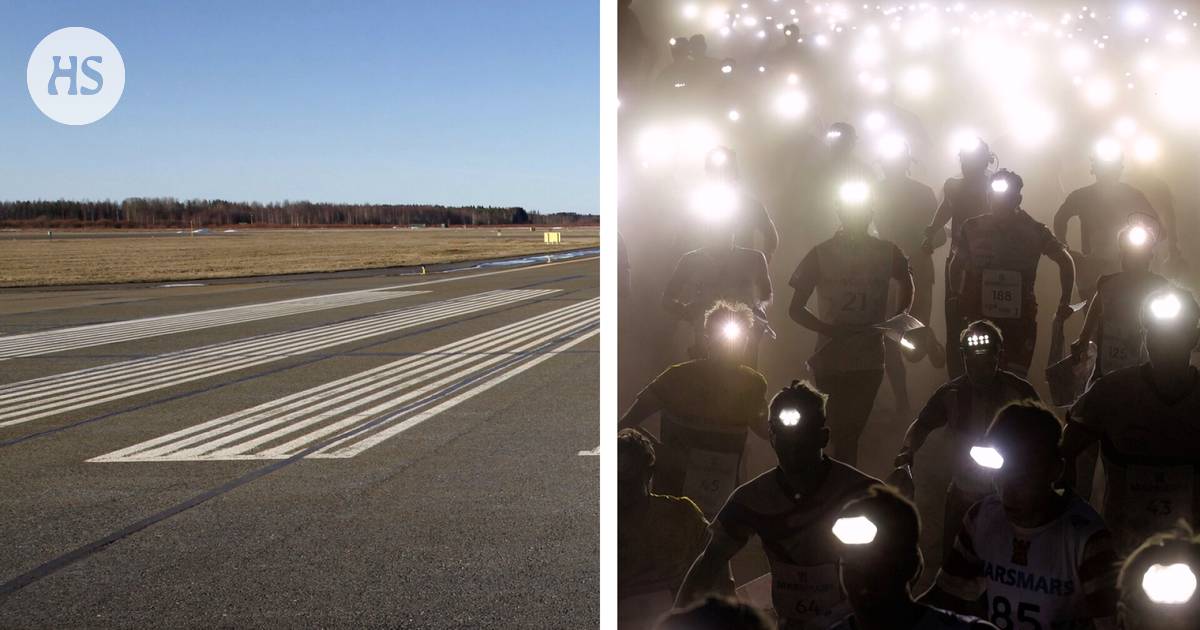The summary is made by artificial intelligence and checked by a human.
Jukola’s message will be held at Kauhava airport, which offers space for mass events.
The competition terrain is varied and hilly, offering challenges to the orienteers.
The Air Force’s Midnight Hawks aerobatic group will also be seen in Lakia-Jukola.
The event attracts a large number of people and the trains exceptionally stop at Kauhava.
Hawk fighters were a familiar sight at Kauhava airport in recent years.
The Air Force’s jet training planes disappeared from the city a decade ago with the closing down of the air warfare school, but there is plenty of noise on the runway on the weekend.
The traditional Jukola message brings its competition center to the airport. The Lakia-Jukola interchange area is located at the northern end of the 2,700 meter long runway.
From there, the pitch necks accelerate to the race terrain, which is hilly by Ostrobothnia standards.
“We have a varied terrain with a wide variety of things on offer,” Lakia-Jukola’s general secretary Pauli Mäkelä tells.
“The finest off-road sections will be a real pleasure for the orienteers, but the terrain will be surprising.”
The surroundings of the old military airport can strengthen the image based on vastness, when all you can see nearby is a field. Mäkelä promises that this will change in the competition field.
“Certainly the best orienteers stand out from the chaff,” he adds.
In 2023, Jukola’s message was organized in Porvoo.
”
“There will be 300 army half-team tents.”
History shines in Lakia-Jukola also in the logo, which has a reference to both the runway and the Midnight Hawks aerobatic group that has been active in Kauhava for a long time.
This is how the giant event honors military aviation, which hardly bothers Jukola’s long-term partner and the Defense Forces, who are prominently present in Jukola.
Midnight Hawks will also be seen at the event, as the group does according to the Air Force An introductory flight in Lakia-Jukola.
The Midnight Hawks aerobatic group, which has been operating in Kauhava for a long time, can be seen in the Lakia-Jukola logo.
Midnight Hawks will be seen at the event. According to the air force, the group will make a demonstration flight in Lakia-Jukola. In the photo, the Midnight Hawks of the air warfare school performed aerobatics at aviation days.
The old military airport is as if it was made for organizing mass events. According to the organizers, up to 60 hectares of permanently paved area are in use.
“The biggest benefit in the airport area is that there is really good space. For example, all parking spaces can be found in an asphalted area,” says Mäkelä.
Large grassy areas, on the other hand, are a good and even accommodation space.
“There will be 300 army half-team tents, which will be sold to the teams,” says Mäkelä.
In addition, 1,500 tent squares will be zoned for the area, where participants can set up their own tents. The space is ten meters wide.
Last year, Kauhava airport hosted another traditional giant event that belongs to the Finnish summer, the Summer Clubs of the old stadium players.
The guests of the Summer Clubs of Old Town Stadium filled the Kauhava airport last summer. The view of the club field taken from the air traffic control tower before sunrise.
”
“Yes, it’s like a small town.”
Summer clubs and Jukola’s message are very similar events from the point of view of LSK Business Park oy, which operates at the airport and develops the area.
“There is an expert organization organizing it, and both events have a long history,” the company’s CEO Mika Marjamäki justifies.
“Where Suviseurat takes care of the restaurant services as a whole, the business of the LSK hotel, i.e. flight hotel, is there [Jukolassa] significantly more. That’s the biggest difference.”
Marjamäki considers Jukola to be a unique event that is of great importance, especially for hotels in the area. Its accommodation capacity has been completely sold for several days.
The rooms were sold out months before Jukola.
“We have about 450 beds. When we talk about four days of accommodation, it is significant for us”, says Marjamäki.
The Lakia-Jukola organization uses only a few of the buildings on the field. For example, air traffic control and the north end’s machine guards are in use.
“Of course, the course department, the base company, the castle building and the health center are used for accommodation,” adds Marjamäki.
”
“The public connections are exceptionally good in our Jukola.”
The control tower of Kauhava’s former air warfare school can be used by the organizers of Lakia-Jukola this weekend. Stock photo.
Kauhavan the airport has as many people as a moderately large Finnish city.
There are 17,200 orienteers, and the number will almost double with the public, says general secretary Mäkelä.
“Yes, it’s like a small town. If you think that more than 17,000 orienteers would not be able to sit in the Nokia Arena, it is indeed a huge crowd,” he adds.
Almost all VR long-distance trains stop at Kauhava station on Saturday and Sunday, which is different from the norm.
“Very few trains stop at Kauhawa these days. They just drive past that to Seinäjoki,” says Mäkelä.
The four-kilometer journey from the station to the competition center is covered by the organizers’ bus. Mäkelä markets the opportunity as an “exceptionally good opportunity”.
“If you jump on the train at the Helsinki railway station, you’ll be in Kauhava in three hours and a ten-minute bus ride from there right in the heart of the competition center.”
“The public connections are exceptionally good in our Jukola.”
